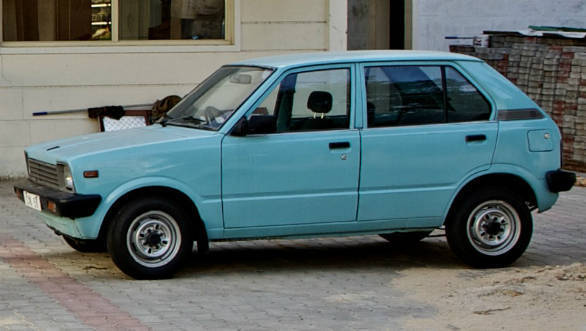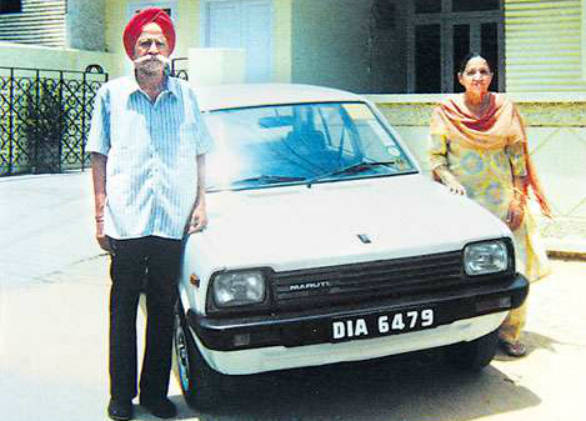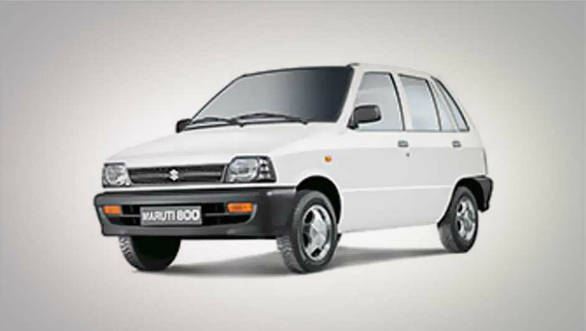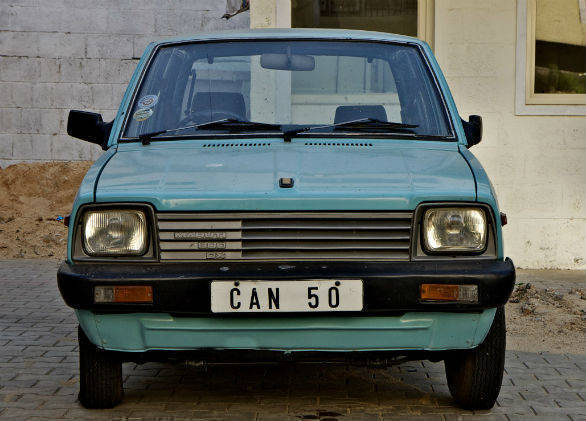35 years of the Maruti 800: A social icon
On the occasion of the 35th anniversary of the launch of the Maruti 800,
Before the incorporation of Maruti Suzuki in the early 1980s, the only two manufacturers of note in India were Premier Automobiles in Mumbai and Hindustan Motors in Kolkata. They manufactured the Premier Padmini and the Hindustan Ambassador respectively. The Premier Padmini was based on the Fiat 1100, a car first sold in the 1950s while the Ambassador was little more than a Morris Oxford, a car from post-war England.
By the 1980s both these cars were hopelessly outdated. However, the buyers did not really have any other options. This was the era of the License Raj. The waiting period stretched into years and the shortage was so acute that used examples were sold at a premium. But all this changed with the introduction of the 800 by Maruti Suzuki in 1983.
 The first generation of the Maruti 800, also called the SS80
The first generation of the Maruti 800, also called the SS80
The Maruti 800 was everything the Ambassador and the Padmini weren't. It was small, nimble, efficient and reliable. It was up to date with the latest in Japanese technology and most importantly it was cheap, without seeming like a compromise. Its impact on Indian society is comparable to the impact that iconic people's cars like the Volkswagen Beetle, the Fiat 500 and the Renault 4 had on their country's social fabric. These countries being Germany, Italy and France respectively.
Like all good cars, the 800 always seemed greater than the sum of its parts. While not being as big as the Ambassador, its size was adequate enough for the average Indian family. There was no need for families to fit themselves onto a scooter whenever they wanted to go out and they were all the more safe for it.
The Ambassadors and Padminis were from a socialist India, where people were expected to know their place in society and stick to it. Dreams and aspirations were looked down upon. However, the 800 seemed to change all of that. Now, the middle class could own a car. Car ownership was not a privilege just for the rich anymore. These were probably the first steps towards the liberalized India that we see now.
 Harpal Singh paid Rs 47,500 to be the first Maruti 800 owner in India
Harpal Singh paid Rs 47,500 to be the first Maruti 800 owner in India
The 800 was light, efficient and up to date, attributes which almost no consumer goods of the time could boast of in India. People now saw that a quality product could also be affordable, this made it all the more popular and opened up a whole new way of thinking for people. The 'good enough' attitude would now be a thing of the past.
This would also be the start of the era in which the customer was king, from having to pay premiums for used cars, buyers were now offered discounts and bargains. This was because the production was well thought and according to the principles of demand and supply. In an era where rationing was the rule and not the exception, this was unheard of.
Another reason why the 800 is so significant is that it was a government initiative and a successful one at that. The government set up Maruti Udyog Ltd specifically for this purpose and then scouted global car makers to see who could provide the best solution before they finally settled on Suzuki from Japan. This was a great achievement considering the bureaucracy involved in such a process.
 The Maruti 800 was the second longest selling car in India. Its 31-year-old production run between 1983 and 2014 was only bettered by the Hindustan Ambassador
The Maruti 800 was the second longest selling car in India. Its 31-year-old production run between 1983 and 2014 was only bettered by the Hindustan Ambassador
The Maruti 800 was in production from 1983 to 2014, which is the second longest production run of any car in India. In those 30 odd years about 2.6 million were sold. Given the popularity of this car, earlier in urban centers and eventually in the rural areas, it is safe to assume that this is one of most important cars sold in India in a social sense. The popularity of his car led to India becoming the small car hub of the world. Other car makers like Hyundai, TATA, Honda, Nissan and so on have also tried their hand in this segment with varying degrees of success but Maruti Suzuki has remained the undisputed leader. Studies have shown that the Maruti Suzuki brand in India has more recall value than even Mercedes-Benz. This is unheard of anywhere else in the world.

While the 800 did go a long in providing a personal mobility solution to the people of India, its impact was still limited to the middle-class only. The lower sections of society are still dependent on public transport, which in most cases in India, is below par. While efforts have been made to solve this issue, the most notable of which is the Tata Nano, these have not been fruitful.
This is because cars in India have always been a status symbol first and then a transport solution, unlike say the USA. It is likely to remain so for the foreseeable future. However, the 800 has gone a long way in getting rid of this perception. With the small car boom that was brought about, a sizeable section of society can now afford their own means of transport.
This piece originally appeared on autodromeind.blogspot.com














